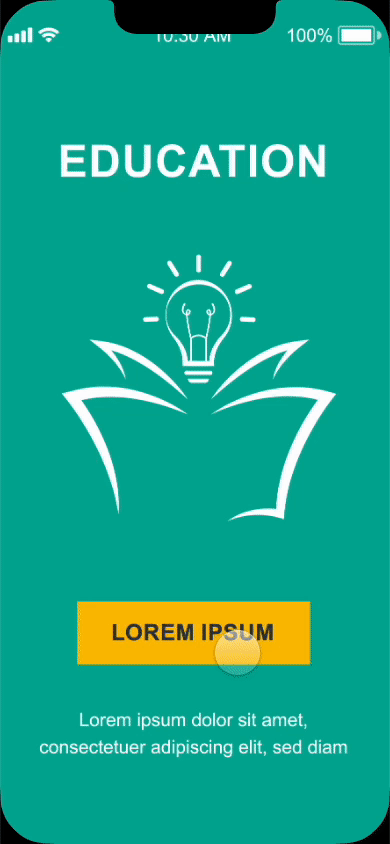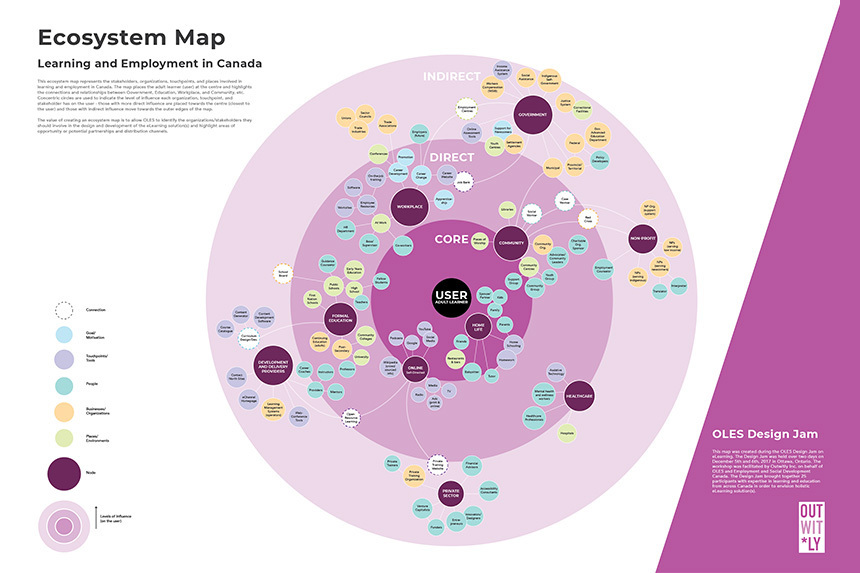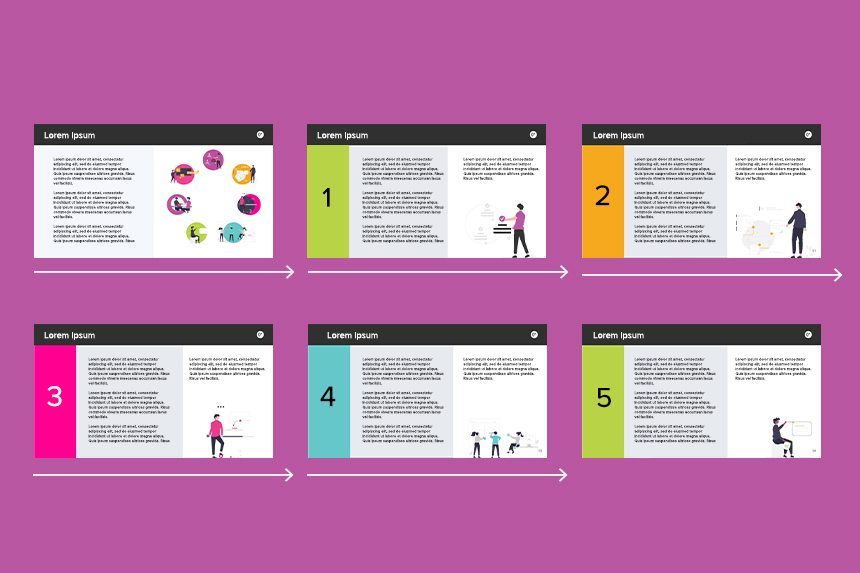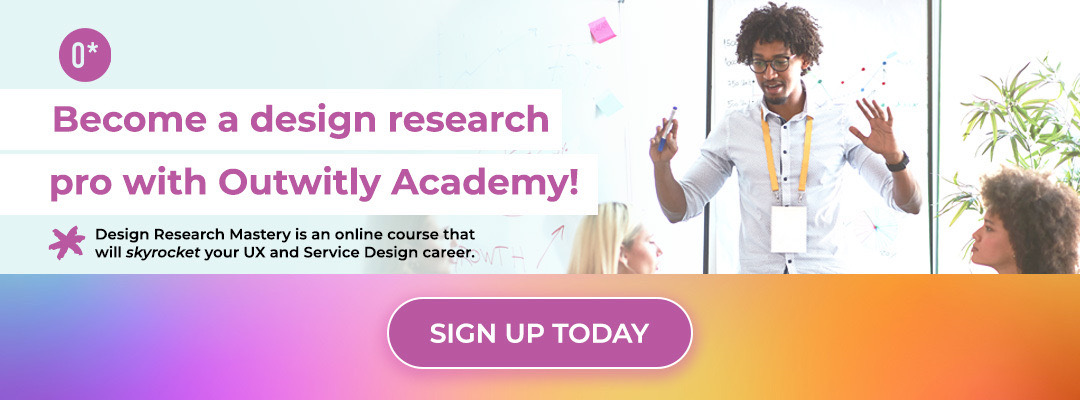
Author: Janine Loo
As you grow and develop in your UX or service design career, it’s important that your portfolio grows along with you. It serves as tangible evidence of the valuable skills and expertise you’ve earned, but it’s also a testament to your evolution. In a previous blog, we discussed how to build a design portfolio and we went over the key elements you should include. This time, we’re presenting our tips for building an exceptional UX or service design portfolio at every stage of your career.
The strategies we dive into below will help you showcase your talents, communicate your achievements and propel your design career forward.
Our tips are divided into three categories:
- Junior UX Designers or Recent Graduates: This section applies to you if you’re relatively new to the design industry, whether you’re applying for your first UX job or you’ve been working for a few years.
- Senior Designers or Project Managers: You might be a senior designer or project manager already, or you might be looking to move into a leadership role. These tips should help you in either scenario.
- Researchers or Service Designers: If your proudest accomplishments are a little less tangible or a little more complex than your colleagues’ UX or UI designs, you can still build an engaging portfolio. See this section for our pointers!
You might only relate to one of these sections, but we still recommend checking out all of the tips. If you do any mentoring or hiring, they’ll be useful guidelines for reviewing someone else’s portfolio.
Let’s get started!
Portfolio Tips for Junior UX Designers and Recent Graduates
If you’re at the beginning of your journey in UX design, congratulations and welcome! This is an exciting time, but it also might feel scary — putting yourself out there is a vulnerable process for new designers (and sometimes even for seasoned designers).
As you build your portfolio, it’s normal to have a lot of questions or wonder if you’re doing something wrong. Maybe you’ve just graduated from a design program and you’re looking for a job, or if you have your foot in the door but you’ve only completed a handful of projects. Either way, you’re definitely not alone, and we’re here to help!
In the section below, we’ll guide you through some great strategies for building a portfolio in this early stage of your career. They should help you optimize what you’ve done so far, and give you ideas for expanding your body of work.
View this post on Instagram
You’ll make a great first impression with potential employers if you:
1. Show initiative in developing your skills: As a junior designer, it’s essential to show your capacity for growth. Attend workshops, take courses and read industry blogs to stay up to date with the latest HCD trends and best practices. With the skills you learn, you can create your own personal projects and use them to flesh out your portfolio. This will show potential employers that you have a good understanding of the design process and that you can apply theoretical knowledge to your tasks, even if those tasks are just for practice.
2. Include highlights from your school projects: While your personal projects are usually self-directed solo endeavours, school projects can demonstrate your ability to collaborate and follow an assigned process. If you’re including a school project in your design portfolio, be sure to provide enough context. Imagine you are the professor assigning a task to a class —the person reading your portfolio should be able to understand the goals and constraints you were given.
You should also explain the role you played in each group project. Were you the project lead? Were you the sole UX designer? Were you responsible for user testing? Or did you take on more than one role? These are important details to flesh out — they’ll help an employer imagine you on their team.

3. Showcase your great personality: In addition to stellar design skills, potential employers are looking for candidates who have interpersonal skills and will fit in well with an established team. When you’re writing the descriptions of your projects, take extra care to represent yourself in a friendly, professional way. Be tactful and respectful when describing any challenges you might have gone through on a project, and be sure to demonstrate a positive, productive attitude in the face of those challenges.
Make sure your personality shines through in your career summary, too! Mention what makes you love your work and be specific. Avoid making generic statements that could be seen as cliché.

4. Leverage internship opportunities and experience: You might be learning how to build your design portfolio as part of your first internship application, or you might already have one or two internships under your belt. Internships are incredibly important because they provide you with hands-on experience: you get to work on real projects with actual clients and users. Include highlights from these projects in your portfolio. They’ll show your ability to work in a professional setting and your motivation to grow.
5. Consider registering for a bootcamp: Bootcamps can be a great way to deep-dive into UX or service design work, gain practical know-how and produce more content for your portfolio. These programs often focus on real-world projects and offer mentorship from experienced designers. Do your research and compare available bootcamps before registering. Make sure you choose one that aligns with your goals and learning style.
If you follow all of these tips, we’re confident that you’ll make a good impression on hiring managers and find your way to that next career step. Be patient and kind to yourself throughout the process — don’t dwell on any rejections, and keep on moving to the next opportunity.
Note: Looking to develop your skills and dazzle employers? Dive into the world of UX and design research by taking Outwitly Academy’s flagship course, Design Research Mastery.
Portfolio Tips for Senior Designers and Project Managers
If you’re a senior UX designer, your portfolio should not only showcase your work but also emphasize your leadership and strategic abilities. A senior UX portfolio will typically include more in-depth case studies and a track record of successful results that show a strong understanding of the design process.
The same guidelines should be applied to portfolios for product or project managers working in UX or service design. They should demonstrate an ability to facilitate cross-functional workflows, keep projects on schedule and lead teams to greater heights.
Here are some key tips to help those in senior and management roles stand out from the crowd:
1. Demonstrate an ability to meet and exceed goals: At this stage of your career, you’re not simply proving that you can complete a complex project — you’re proving that you can exceed expectations. Your portfolio should show that you understand how to set clear goals and objectives for each project and how to knock them out of the park. Be specific about what you set out to achieve and what strategies you used to do such a great job. Make it clear that you understand what successful teamwork looks like in a UX context.
2. Show the outcomes of your work: When you’re describing your best projects, focus on the positive results and changes you helped to effect. For example, if you worked on a redesign of a website or app, show how your work led to an increase in user engagement or a decrease in bounce rate. If you worked on a new product or feature, highlight how it improved user satisfaction or increased revenue for the company.
If you’re a manager, you may have implemented strategies and best practices to ensure that your team met all their deadlines, stayed within budget while hitting quality targets, worked together more efficiently, etc.
3. Use metrics to prove your achievements: Leaders who can influence hiring are generally very interested in numbers and measurable impact (i.e. “the bottom line”). If you’ve improved user satisfaction or helped to increase revenue, do your best to track down the numbers that show these results. Don’t worry too much if you’re struggling to remember the exact figures. You can approximate — but remember to include words like “approximately” or “roughly” if you do!

4. Include working prototypes: If you’re showcasing an application with a relevant prototype, take that extra step and add it to your portfolio! Ideally, it should be workable and clickable. Ensure the interactions make sense for someone exploring your work, and that the design is sophisticated and thoughtful. Explain the context in which that prototype was created, what you learned from the prototyping stage and how you applied that knowledge to the final product.

5. Highlight task delegation and strategy development: If you’ve worked in a managing or supervising position, describe how your short-term and long-term project management strategies resulted in successful outcomes. Explain how you led your team to success: list any challenges you faced along the way and provide a breakdown of how you overcame them. You should also demonstrate any experience you have overseeing complex end-to-end projects that involve multiple phases, like discovery research and testing.
6. Provide examples of mentorship: Employers love hiring people who can teach their teams new skills or help with onboarding. Include in your portfolio at least one project where you developed the skills of junior designers or made a positive impact on their growth. Include key details about their learning progress and why it was important:
- What experience did they have when you started?
- What skills and knowledge did you teach them?
- How did that contribute to the success of the project or the organization?
At a certain level of experience, everybody is impressive. If you want your portfolio to get noticed, you’ll need to go one step further than the competition. We hope these tips will inspire you to “go the extra mile!”
Portfolio Tips for UX Researchers and Service Designers
Service designers and design researchers often come from a wide range of backgrounds, or start out in other industries entirely. As a result, many people who work in research and service design end up learning on the job instead of receiving a formal design education.
This diversity brings a ton of unique perspectives and skillsets to service design teams and allows for a multidisciplinary approach to problem-solving. (That’s an especially great thing to have when you’re working in human-centered design!)
If you’re one of these practitioners, you may have limited experience creating a portfolio or demonstrating your experience in a traditional design format. Or you might be unsure of what to include because your work is multi-faceted and doesn’t translate easily into images. We’ve been there, and we’ve put some tips together to help!

Here’s our recipe for making a design research or service design portfolio:
1. Consider alternative portfolio formats: Your portfolio doesn’t have to be a traditional collection of visual designs. Instead, think about the best artifacts you’ve created as a service designer or researcher and how to best organize them.
- Snippets of interview guides
- Journey maps
- Service blueprints
- Ecosystem maps
- User personas
- Final project reports
- In-progress work (like diary studies and workshop artifacts)
You can assemble these in a format that lends itself to more writing, like a report or a slide deck. You should show a mix of text and related images to create interest for the eye while still keeping the focus on your most impressive work and outcomes.
2. Show your understanding of the end-to-end design process: Service designers and researchers should be really well acquainted with the entire design process and comfortable with the “fuzzy front-end of design.” Mention any struggles you had during your projects and show how you pulled through. Make sure to also highlight valuable skills like small- and big-picture thinking and a systems mindset. Showing your work can help here – rather than using a “before” and “after” approach, include the “middle,” too.
3. Demonstrate your leadership abilities: Service designers often end up in positions where they’re overseeing designers or engaging directly with stakeholders. Employers look for these practitioners who are prepared to lead a group of multidisciplinary people through a design process. When you’re describing your successes, include examples of your outstanding leadership, organization, stakeholder management and conflict negotiation skills! If you’ve designed and facilitated your own workshops, make sure to include those details, too.
4. Provide context, but be succinct: When we look back on projects we’ve already completed, it’s easy to take context for granted. In reality, every project is different, so you should never assume that the person reading your portfolio can read between the lines. Showcase the various research methods or design frameworks you applied to your best projects, and back up these choices by indicating project sizes, scales and goals.
At the same time, be wary of getting too wordy. In service design and design research, there is usually a TON of context to lay out for each project, and it can be tempting to spell out every little detail. Prioritizing your key project highlights and leaving out the smaller things will help potential employers understand your work without getting bogged down.
5. Tell a compelling design story: Storytelling is a valuable skill for researchers and should be reflected in your portfolio. You’ll need to show that you can translate data into insights and exhibit your findings in an engaging way. There will be two layers to the storytelling in your portfolio:
- The story of how you communicated insights in your best projects.
- The story of your portfolio itself and the way that it transitions from one project to the next.
Again, you should use both written and visual elements to help guide readers along. Be clear and concise with your communication and lay things out in a way that flows, with pronounced headers, approachable word counts and easy-to-read fonts.

As you navigate your evolving UX or service design career, you should see your portfolio as a living, breathing document, just like your resume. It should grow alongside you, capturing your journey and your achievements.
Whether you’re a junior practitioner entering the design industry, a seasoned UX designer or manager making leadership moves, a service designer chasing the next opportunity or a researcher looking to gain buy-in for more research, we hope the above tips will help you create a portfolio that reflects your amazing abilities.
Remember that your portfolio is more than a collection of projects; it’s a representation of your passion, creativity and commitment to enhancing the user experience and service design landscape. If you put enough effort into painting that fuller picture of your work, you’ll find yourself with more career options and a very bright future in design.





